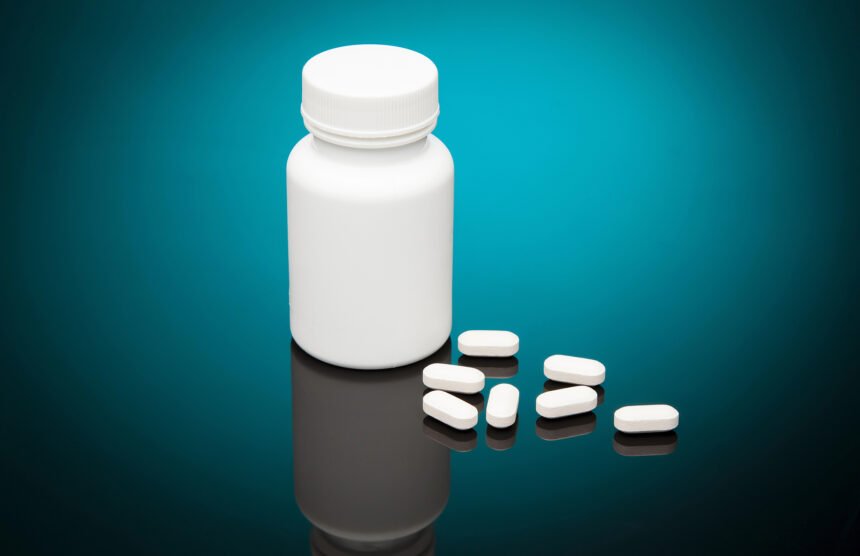Pharmaceutical impurity reference standards play a crucial role in ensuring the safety and efficacy of medications. By meticulously identifying and quantifying impurities, these standards help maintain stringent quality control. Understanding their importance can significantly impact drug development and public health.
- The Role of Pharmaceutical Impurity Reference Standards
- Why Identifying Impurities is Crucial
- Impact on Drug Efficacy and Patient Health
- Regulatory Requirements for Impurity Levels
- Insights from Impurity Profiling
- The Process of Developing Impurity Reference Standards
- Identification and Characterization of Impurities
- Employing Advanced Analytical Techniques
- Validation and Reliability in Quality Control
- Continual Assessment and Improvement
- The Impact on Drug Development and Patient Safety
- Influence on Drug Formulation and Manufacturing
- Proactive Identification for Enhanced Safety
- Economic Benefits and Regulatory Streamlining
- To Conclude
Ensuring drug safety is paramount in the healthcare industry. You may wonder how pharmaceutical companies achieve this consistently. One key aspect involves the use of pharmaceutical impurity reference standards, which are essential for maintaining the integrity of drugs.
The Role of Pharmaceutical Impurity Reference Standards
Impurity reference standards are critical tools used in the pharmaceutical industry to ensure the purity, safety, and quality of drugs. These standards are highly characterized, quantifiable chemical substances that serve as benchmarks for determining the presence and concentration of impurities in drug products. By setting definitive criteria for impurity levels, they provide a basis for regulatory compliance and help maintain consistency across production batches.
Ensuring Drug Quality and Safety
The principal function of impurity reference standards is to safeguard the health of patients by ensuring that drugs are free from harmful impurities. They are vital for:
- Validation of analytical methods: Reference standards are used to develop and validate test methods that identify and quantify impurities.
- Batch-to-batch consistency: They help in comparing the impurity profiles of different batches of the same drug, ensuring consistent quality.
- Regulatory compliance: Meeting the established impurity criteria is crucial for regulatory approvals. Reference standards are pivotal in demonstrating that a drug meets these stringent requirements.
Role in the Drug Manufacturing Process and Quality Control
In the drug manufacturing process, impurity reference standards play an indispensable role in several stages, including:
- Raw material screening: Ensuring that raw materials meet purity specifications before they are used in drug production.
- Process monitoring: During synthesis, reference standards help monitor the process to ensure that it does not introduce unintended impurities.
- Final product testing: Before drugs are packaged and shipped, they must be tested against the reference standards to ensure they meet all quality and safety guidelines.
Use Cases
Several practical use cases exemplify the importance of impurity reference standards in pharmaceuticals:
- Antibiotic Production: In antibiotic manufacturing, impurity standards help ensure that the final product does not contain harmful residues from the synthesis process, which could compromise its effectiveness or safety.
- Oncology Medications: For cancer treatments, which often use highly potent and sometimes toxic substances, impurity standards ensure that any potentially harmful byproducts are identified and kept within safe limits.
- Vaccines: Given the global distribution and sensitive nature of vaccine formulations, impurity standards are crucial for ensuring that no unexpected reactions occur due to impurities.
- Generic Drug Manufacturing: Generic manufacturers use impurity standards to prove that their product is bioequivalent to the brand name counterpart, focusing particularly on impurity profiles.
The identification and management of impurities in pharmaceuticals is a cornerstone of drug safety and efficacy.
Impurities can arise from a variety of sources including raw materials, the synthesis process, degradation products, or through interactions with packaging. Their presence can significantly affect the therapeutic properties of pharmaceuticals and pose substantial risks to patient health.
Why Identifying Impurities is Crucial
Identifying impurities in drugs is vital for several reasons.
Impact on Drug Efficacy and Patient Health
Impurities in drugs can have profound effects:
- Reduced efficacy: Certain impurities can interact with the active pharmaceutical ingredient (API), potentially degrading its effectiveness or altering its intended impact on the body.
- Adverse reactions: Toxic impurities can induce unintended side effects ranging from mild allergic reactions to severe adverse events, compromising patient safety.
- Compromised pharmacokinetics: Impurities might affect the absorption, distribution, metabolism, and excretion of drugs, thereby altering their therapeutic profile.
Regulatory Requirements for Impurity Levels
Recognizing these risks, regulatory bodies worldwide have set stringent guidelines for impurity levels in pharmaceuticals:
- Threshold limits: Regulations such as those from the U.S. FDA, European Medicines Agency, and the International Council for Harmonisation (ICH) specify maximum allowable levels for various impurities.
- Mandatory reporting: Pharmaceutical companies are required to identify, quantify, and control impurities, documenting their efforts as part of the drug approval process.
- Ongoing surveillance: Even after a drug is on the market, companies must continually monitor impurities as part of post-market surveillance activities.
The importance of these regulations cannot be overstated, as they are essential for ensuring that all medications are both safe and effective for consumer use.
Insights from Impurity Profiling
Through advanced analytical techniques, impurity profiling provides critical insights into a drug’s chemical behavior and stability:
- Predicting degradation pathways: Understanding how a drug degrades over time allows for the design of more stable formulations.
- Optimizing synthesis processes: Detailed impurity profiles help in refining synthesis processes to minimize the formation of unwanted byproducts.
- Enhancing drug design: Insights into impurities can lead to modifications in drug molecules to improve efficacy and reduce side effects.
Impurity profiling not only helps in complying with regulatory standards but also significantly enhances the understanding and improvement of drug formulations, thereby directly impacting drug development and patient safety.
The Process of Developing Impurity Reference Standards
Developing impurity reference standards is a meticulous process that combines advanced science with stringent regulatory compliance to ensure that all pharmaceuticals released to the market are of the highest quality and safety. This section breaks down the key phases in this critical endeavor.
Identification and Characterization of Impurities
The initial phase in developing reference standards involves the thorough identification and characterization of potential impurities. This process starts by analyzing the drug’s synthesis pathway to predict possible impurities, including side products, degradation products, and contaminants. Sophisticated analytical techniques are then employed to detect and isolate these impurities. Each identified impurity is carefully studied to understand its structure, origin, and potential impact on the drug’s safety and efficacy.
Employing Advanced Analytical Techniques
The cornerstone of impurity identification is the use of state-of-the-art analytical technologies:
- High-Performance Liquid Chromatography (HPLC): This technique is pivotal for separating and quantifying impurities. HPLC allows chemists to analyze complex mixtures and identify the components based on their interaction with the chromatography column and their response to the detector.
- Mass Spectrometry (MS): MS is used in conjunction with HPLC to provide a detailed mass profile of each component, offering precise structural elucidation of the impurities. This information is crucial for confirming the identity and quantity of each impurity.
These techniques not only aid in the initial identification but are also critical in the ongoing monitoring and analysis of impurities throughout the drug development process.
Validation and Reliability in Quality Control
After identifying and characterizing each impurity, the next step is the validation of the impurity standards. Validation involves rigorously testing the methods used to quantify impurities to ensure they are accurate, reproducible, and robust. This phase ensures that the impurity standards can reliably predict the presence and concentration of impurities in a consistent manner across different batches and conditions.
The validated reference standards are then implemented in routine quality control processes to monitor impurity levels in all production batches. These standards are crucial for ensuring that each batch of the pharmaceutical meets the stringent requirements set by regulatory authorities, thereby safeguarding patient safety.
Continual Assessment and Improvement
The development of impurity reference standards is not a one-time task but a continuous process that evolves with new discoveries and technological advancements. Continuous assessment and improvement of these standards are essential to adapt to changes in manufacturing processes, regulatory requirements, and scientific knowledge, ensuring that the standards remain effective and relevant.
The Impact on Drug Development and Patient Safety
Influence on Drug Formulation and Manufacturing
Impurity reference standards are integral to the pharmaceutical industry, shaping drug formulation and manufacturing processes. By providing clear benchmarks for impurity levels, these standards help pharmaceutical developers optimize formulations to enhance drug stability and effectiveness. This ensures that each batch produced adheres to the highest standards of quality and safety, thus maintaining the integrity of the drug throughout its shelf life.
Proactive Identification for Enhanced Safety
The use of these standards allows for the proactive identification of potential issues in the drug development phase, significantly enhancing patient safety. By understanding and controlling impurity profiles early on, manufacturers can prevent harmful side effects and ensure therapeutic efficacy, reducing the risk of adverse reactions in patients.
Economic Benefits and Regulatory Streamlining
Adhering to impurity standards not only safeguards patient health but also offers substantial economic benefits to pharmaceutical companies. Compliance with these standards helps in avoiding costly drug recalls and delays that can arise from regulatory non-compliance. Furthermore, streamlined regulatory processes, facilitated by clear and consistent adherence to impurity guidelines, expedite drug approval times and reduce development costs. This compliance creates a more efficient pathway through the regulatory landscape, ultimately benefiting the company’s bottom line and public health.
To Conclude
Impurity reference standards are fundamental to pharmaceutical practice, underpinning the safety and efficacy of drugs that reach the market. Their critical role in guiding drug formulation, quality control, and regulatory compliance cannot be overstated. By maintaining stringent impurity controls, the pharmaceutical industry not only protects public health but also fosters innovation and advancement in drug development. These standards are indispensable in our ongoing quest to deliver safer, more effective medical treatments.








